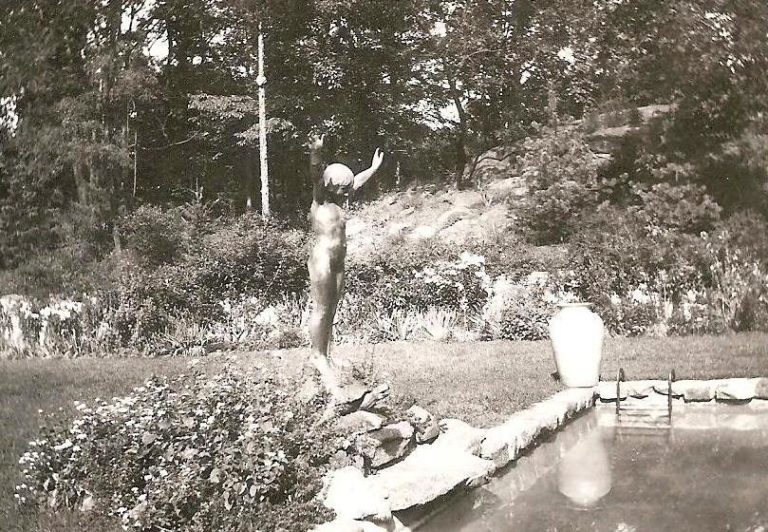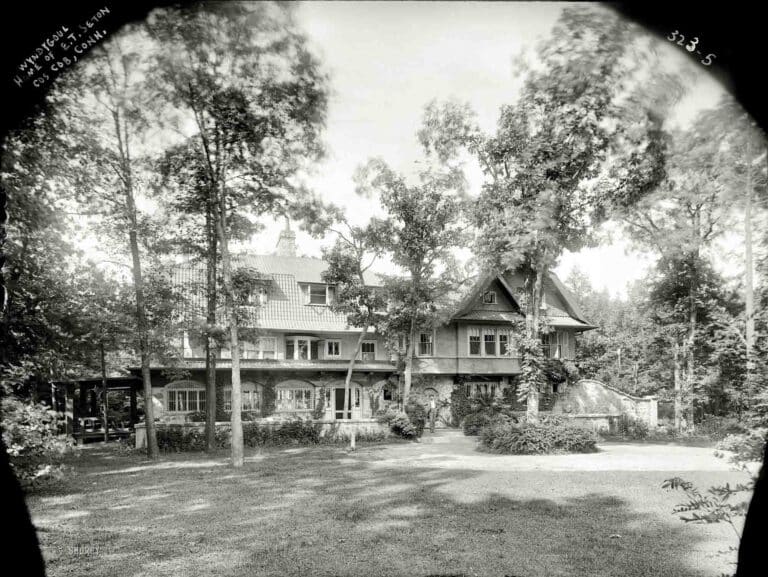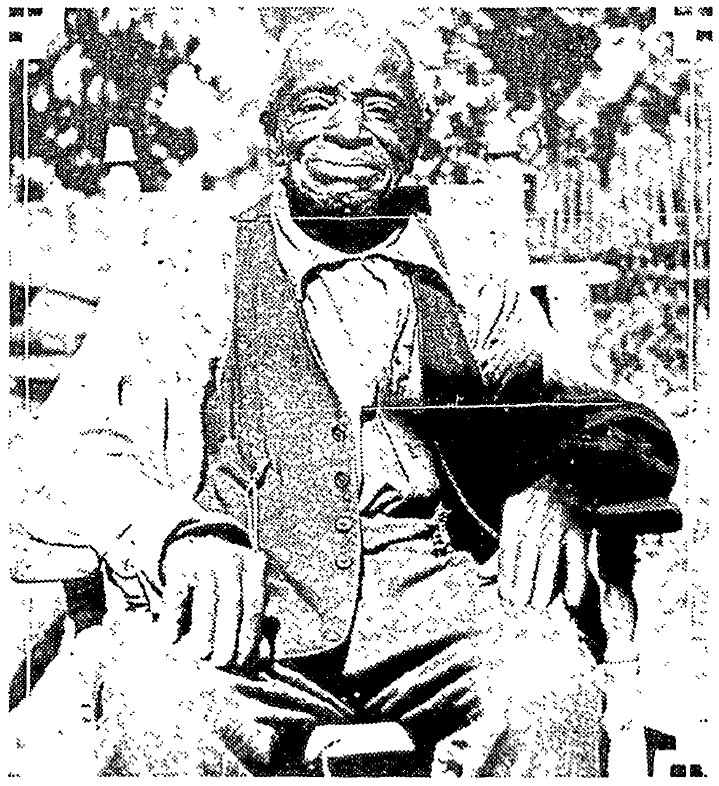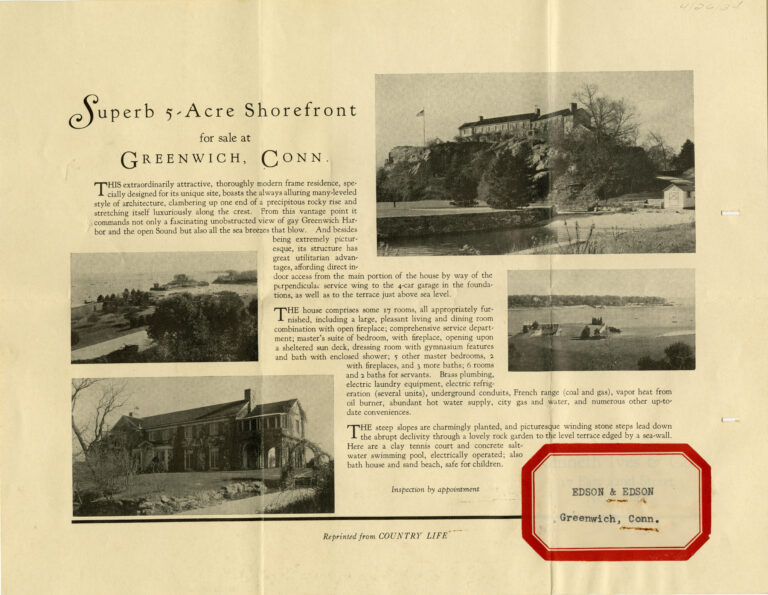In the following video, an old photograph of a poolside sculpture reveals details about a family tragedy and a historic home.
(A transcript of the video is printed below.)
[Video begins]
I’m Christopher Shields, Curator of Library and Archives at the Greenwich Historical Society.
I received a research request based on a photograph in a family album. The image appears to date from around 1930 and shows a sculpture of a young woman by the edge of a pool. The handwritten caption on the back of the photo indicates that the likeness was of a woman named Ellen Louise Wallen and that the location was her home in Greenwich, Connecticut. It described her as a special friend of someone called “Toadie” and indicated that Ms. Wallen had died young.
The researcher knew that “Toadie” was her grandfather’s nickname. But who was Ellen Louise Wallen? Could we find more information about her family? Where was their Greenwich home? Was this beautiful sculpture still there? These were some of the questions that the researcher was hoping I could answer.
The 1930 U.S. Census, accessed via Ancestry.com, showed the Wallen family living on Fox Run Lane in Greenwich, but did not provide a full street address. Ellen Louise was 14 years old.
A search of the Historical New York Times [Collection] database (accessed through the Greenwich Library [website]), revealed a brief entry from May 2, 1930, indicating that Ellen Louise had died in Munich, Germany, where she had been attending school. The article mentions that the family lives at Mead’s Point in Greenwich, and not Fox Run Lane as indicated on the census record.
A document from the American consulate [American Consular Service] was available on Ancestry.com that provided additional details, indicating that Ellen had died from complications during an appendectomy. A New York City address is listed for her parents.
Next, I turned to the wonderful collection of maps in the Historical Society’s archival collection. The 1938 Franklin Survey and Co. [Franklin Survey Company] map showed the property of Natalie Wallen Brosseau on Fox Run Lane. It even indicated that there was a pool on the property!
It appeared that Ellen’s mother had remarried and a new search of the Historical New York Times [Collection] database resulted in a 1933 obituary for George Sykes Wallen, Ellen’s father. There was also a 1934 announcement of her mother’s subsequent marriage to Mr. Alfred J. Brosseau.
At this point, I was hopeful that I could find a period photo of the Wallen home on Fox Run Lane. I checked the 1929 publication Greenwich in Pictures and found an image of the pool at the home of George S. Wallen [on Fox Run Lane]. Details clearly matched those in the photograph with the sculpture, but the publication predated the death of Ellen Louise, so there was no memorial sculpture to be found poolside.
I wanted to see if I could find an image from just a few years later. The archives have collections from several former real estate firms in town. These are a resource for items such as sales brochures, property photographs, and owner correspondence. The collection of the former Edson & Edson real estate business is particularly strong in such materials from the early to mid-twentieth century. A careful review of items pertaining to properties on Fox Run Lane yielded a 1939 sales brochure for a property called White Oaks, which featured a small photograph of the pool and the sculpture.
The name White Oaks was familiar to me from the Historical Society’s Landmark Recognition Program, which recognizes architecturally and historically significant structures in town. This home had been recognized in 2008 as part of a collection of Greenwich homes built by brothers J. Alden and Quentin Twachtman. They were the sons of American Impressionist painter John Henry Twachtman, whose summer art classes at Bush-Holley House formed the basis of the Cos Cob art colony. The landmark research file included the complete street address and deed research showing that it had been sold by Quentin Twachtman to Natalie Wallen in 1928.
Photographs taken in 2008 did not show the sculpture, so it appeared that it was no longer on the property.
An article from 1954 in The New York Times added one additional piece in the history of the home. It turns out that movie star Rita Hayworth and her husband, singer Dick Haymes, had resided there but were evicted for nonpayment of rent. Although the article didn’t feature a street address, I was able to make the connection because the owner’s name that appeared in the article matched an entry in the landmark deed research.
After a few hours of research, I was able to answer this research request with much of the information they were interested in. It’s a great example of how using a variety of resources, each providing a bit of additional detail, can help build a more complete picture. This can lead in unexpected directions, but that only makes the process more interesting and rewarding.
Maybe this example will make you want to find answers to questions of your own. To submit a question related to Greenwich, use the research request form [under the heading “Research Services”] on the Historical Society’s website at greenwichhistory.org.
[Video ends]





